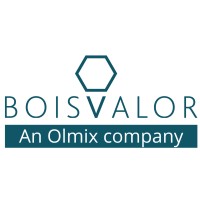More and more data is being published to describe the effects mycotoxins have on fish and shrimp, describing a wide variety of symptoms and responses.
Mycotoxins are secondary metabolites produced by fungi in plant materials. They have diverse toxic effects on animals and humans, therefore mycotoxin contamination of feedstuffs has an impact on the entire food chain, from the crop to the consumer. Mycotoxins affect the grain quality, impair animals’ productivity, lead to the implementation of strict control plans and sometimes grain treatments, can affect human health, and so, can have a severe financial impact in several fields.
The aquaculture sector long believed mycotoxins were a “livestock problem”, however due to the continuous development of aquaculture and the nutritional benefits of the species produced, this sector has become more and more important in providing food for humans. To ensure a continuous growth of aquaculture output and to increase its sustainability, there is an increasing trend to use plant-based ingredients as partial or complete replacement of fishmeal and fish oil in aquafeed formulations. Consequently, the mycotoxin risk in aquaculture production is increasing.
More and more data is being published to describe the effects mycotoxins have on fish and shrimp, describing a wide variety of symptoms and responses. This heterogeneity is due to species sensitivity, life stage, nutritional and health status of the animals, environmental conditions and method of intoxication used in trials. These studies led to the estimation of mycotoxin levels considered harmful for aquaculture species, from which stem the EU regulation (aflatoxins) and guidelines (DON and FUM) for mycotoxin contamination in aquafeeds.
The EU limit is set at 10 ppb (µg/kg) for aflatoxins, while it is recommended not to exceed 5,000 ppb for DON and 10,000 ppb for FUM in complete feeds. Because these values have mainly been estimated under experimental conditions, without considering polycontamination, deleterious effects of mycotoxins can be observed at much lower levels in the field.

Mycotoxin management is becoming a priority in aquaculture.
The aquafeed industry is now using many cereal products such as soybean meal, corn or wheat gluten meal and rice bran. Considering their current inclusion rates in aquafeeds, these ingredients should be handled carefully because they are known to contain a risk of mycotoxin contamination. Taking soybean meal as an example, Olmix Myco’Screen Overview showed that 96% of the analyzed samples were contaminated with one or several mycotoxins. Additionally, 72% of the samples analyzed showed polycontamination for several mycotoxins, of which FUM (60% > LOQ) and DON (35% > LOQ) were most prevalent.
It has been demonstrated that different mycotoxins can have synergistic effects in aquaculture species. E.g. in rainbow trout, the presence of FB1 makes AFB1 more carcinogenic than if either were alone (Carlson et al., 2001). In catfish, the final weight gain of fish exposed to moniliformin and FB1 polycontamination was 42% lower than the control. In comparison, feeding feeds with equal contamination levels of either MON or FB1 alone, resulted in a 16% and 23% lower final weight gain, respectively (Yildrim et al., 2000). To prevent any loss in performance triggered by mycotoxins, it is advised to control the contamination level of most risky raw materials incorporated in the feeds. If mycotoxin contamination is detected, the use of a mycotoxin risk management solution in feeds can help minimize the risk and prevent a decrease in performance. To ensure an optimum protection, the use of a wide spectrum product is recommended.

Mycotoxins have several negative effects on fish and shrimp.
Conclusion
Mycotoxins are found worldwide and their economic impact is likely underestimated throughout the entire food chain. The literature is not yet abundant for fish and shrimp, but already it corroborates the harmful impacts observed on farms in the presence of mycotoxins. The increasing trend of using plant-based raw materials for the production of more sustainable aquafeeds (in particular cereal co-products that are a higher risk than cereals, such as gluten meal, bran, etc.), suggests that mycotoxin risk management will be of similar importance in aquafeed as it now does in other animal feeds. The use of wide spectrum solution should be part of this mycotoxin risk management.




